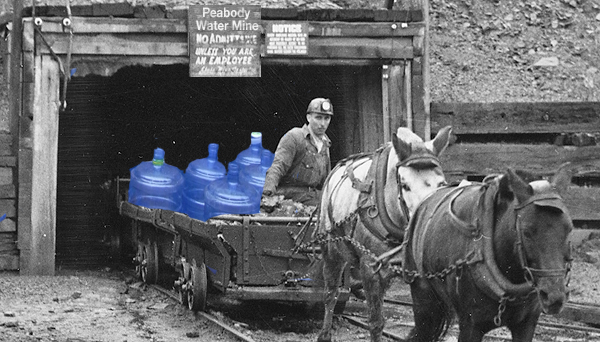 Long after gold created a Rush in California and oil created a Boom in Texas, the ever surprising, ubiquitous, and commonplace water continues to capture our imagination like no other substance. And for good reason. We cannot live without it. In all its states — liquid, solid or gaseous — and in all its locations — desert, rain forest or poles — it is essential to all life on the planet, and the functioning of society at-large.
Long after gold created a Rush in California and oil created a Boom in Texas, the ever surprising, ubiquitous, and commonplace water continues to capture our imagination like no other substance. And for good reason. We cannot live without it. In all its states — liquid, solid or gaseous — and in all its locations — desert, rain forest or poles — it is essential to all life on the planet, and the functioning of society at-large.
Even when it is not top of mind, down deep in our genes we need to know it is near, that there will be plenty of it the remainder of our lives, and that fellow humans are diligently tracking it down, whether by dowser, drill or unmanned spacecraft.
So, the story went viral when Nature announced on March 12 that researchers believe there may be oceans of water trapped in Earth’s mantle.
From Nature’s news release:
A microscopic crystal of a mineral never before seen in a terrestrial rock holds clues to the presence of vast quantities of water deep in Earth’s mantle, scientists report in a paper published today in Nature1. The discovery came from a diamond weighing less than one-tenth of a gram, found in Brazil. Further studies of the sample could help to answer the long-standing question of the origin of the planet’s water.
According to the article, principal investigator Graham Pearson of the University of Manitoba believes there could be more water trapped in Earth’s mantle than in all of the oceans combined. Other scientists are less convinced.
There seems to be no limit to our pursuit of and fascination with water. We will go to extraordinary lengths to find it, and find a use for it.
Data collected from NASA’s Mars Reconnaissance Orbiter mission suggest the presence, or former presence, of water on the planet. With the hope of water rests the hope of life. The cost of the Mars mission is approximately $720 million.
On October 9, 2009, as part of its LCROSS mission NASA crashed the upper stage of an Atlas V rocket into the lunar south pole of the moon so the LCROSS spacecraft could fly through the upwardly ejected debris to measure for water.
It identified approximately 24 gallons in the form of ice crystals. The total cost of the LCROSS mission was $79 million, or approximately $3.3 million per gallon.
According to United Nations data:
[A]lmost half the world’s population will be living in areas of high water stress by 2030, including between 75 million and 250 million people in Africa.
And, of course, water trapped in Earth’s mantle, the moon and Mars offer no relief for the planet’s water crisis.
On a more hopeful note, Water.org, the international water relief organization, says $25 can provide water for life for one person in the developing world.









